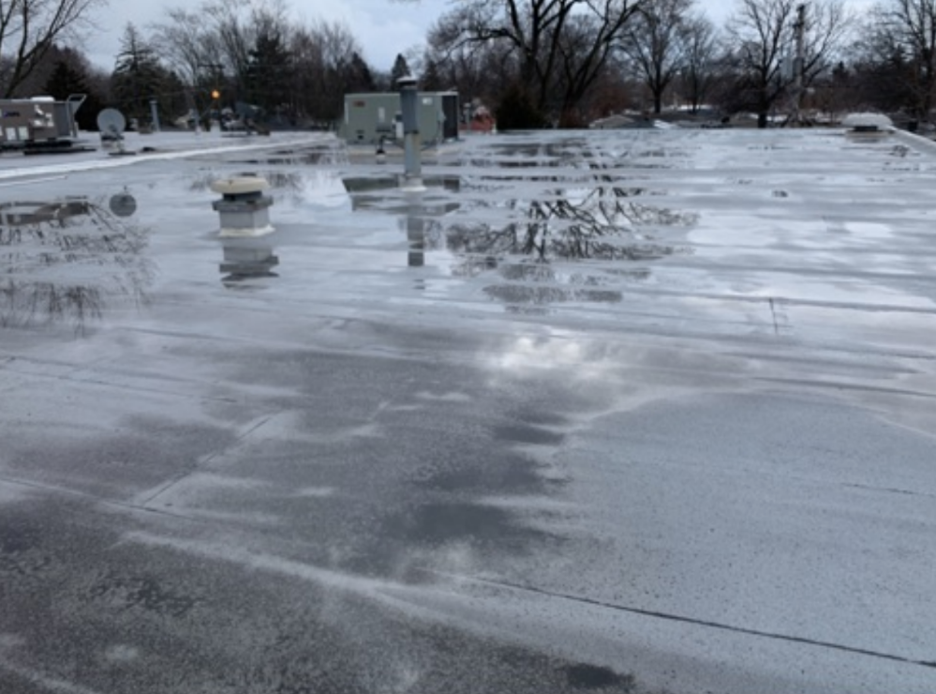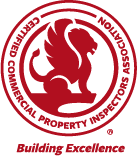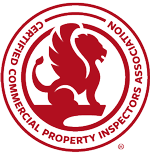A cost-to-cure table is a table that compiles construction cost estimates (CCEs) for immediate improvements and enhancements to a property based on the findings of a commercial property inspection report. It helps clients determine the necessary funds to set aside to cover immediate expenses. CCEs refer to a collection of repair-and-replacement cost estimates gathered from a reputable source that takes into account current, local, and seasonal prices for labor, time, equipment, and materials. Some sources for CCEs include RS Means, Repair Pricer, Marshall and Swift, and local contractors and tradespeople.
Providing cost-to-cure services typically entails:
- perform the inspection;
- writing the inspection report;
- selecting reported issues for the cost-to-cure table;
- compiling costs for those issues; and
- attaching the cost-to-cure table to the inspection report.
This service is typically offered in conjunction with a commercial property inspection. In some cases, cost-to-cure tables may be provided as a standalone service for repeat clients seeking maintenance projections or for general property management purposes.
Cost-to-cure tables share some similarities with capital reserve tables. The primary difference is that a capital reserve table is a multi-year plan (i.e., five-, 10-, and 15-year) that helps determine the necessary funding to set aside for both immediate and capital expenses, factoring in compounding inflation. It’s important to note that, unlike a capital reserve study, a capital reserve table does not involve an examination of the status of the property’s reserve funding accounts or strategies. After mastering a cost-to-cure table, inspectors may choose to expand their expertise to include capital reserve tables. Offering full reserve studies typically requires additional accreditation. Remember that the key to a cost-to-cure table is that it covers immediate expenses.
Benefits of a Cost-to-Cure Table
Commercial property inspections determine the overall condition of a property, while cost-to-cure reporting services go a step further by providing insight into the financial picture of the property as an asset. The benefits of this service can vary, depending on the client. Those clients who perform their due diligence when purchasing a commercial building can use the table to negotiate repairs, a lower price, and the first year of maintenance. Similarly, clients who currently own a building can determine the next year’s maintenance budget and evaluate their capital expense fund in comparison to required repairs. A capital expense fund for commercial real estate is a reserved amount of money set aside to cover significant expenditures for property improvements or major repairs beyond regular maintenance. Property owners interested in selling or leasing a property can use a cost-to-cure table for similar purposes.
Overall, offering a cost-to-cure table allows inspectors to add value to their services by providing clients with valuable information and guidance regarding a property’s condition and potential repair costs. It can be offered as an add-on to a commercial property inspection, and it provides an opportunity to acquire repeat business and additional revenue streams.
Examples of Cost-to-Cure Table Items
The most common items identified in an inspection report and cost-to-cure table are those items considered to be part of “The Big Three.” These are the three items that are typically considered the most costly to repair, maintain, and replace: parking areas, HVAC, and roofing. We’ll review some example scenarios below. Note that the costs listed in these scenarios are for example purposes only. Sources vary, including internet searches, contractor estimates, and published cost books.

The roof is 11,000 square feet with a modified bitumen roof covering. This roof is at least 25 years old, with ponding and several recently repaired patches. This type of roof typically has a replacement cost of $11 per square foot, for a total replacement cost of $121,000.
 A specialty consultant conducted the inspection of all nine packaged units at the building. Each unit had issues, with some requiring replacement. The documentation provided a detailed cost estimate of $171,539 for both repair and replacement.
A specialty consultant conducted the inspection of all nine packaged units at the building. Each unit had issues, with some requiring replacement. The documentation provided a detailed cost estimate of $171,539 for both repair and replacement.
 This photo shows a 33,000-square-foot asphalt parking lot at a small shopping plaza. During the inspection of the parking area, the inspector found deep alligator-type cracking, many patches from previous repairs, and two catch basins with lids that were no longer flush with the pavement. Based on this condition, paving replacement is recommended. Using published cost data sources, the average removal and replacement of the asphalt parking area is $5.15 per square foot, for a total of $170,000.
This photo shows a 33,000-square-foot asphalt parking lot at a small shopping plaza. During the inspection of the parking area, the inspector found deep alligator-type cracking, many patches from previous repairs, and two catch basins with lids that were no longer flush with the pavement. Based on this condition, paving replacement is recommended. Using published cost data sources, the average removal and replacement of the asphalt parking area is $5.15 per square foot, for a total of $170,000.
Beyond The Big Three, most of the items found during a commercial property inspection relate to either maintenance or term replacement of other items. This includes attention to the windows and doors, sealants, and coatings, and any other issues noted in an inspection report.
 A specialty consultant found issues with the septic system. This system will require cleaning, as well as replacement and repair of some of its key components. The cost estimate provided by the specialty consultant was $27,091.
A specialty consultant found issues with the septic system. This system will require cleaning, as well as replacement and repair of some of its key components. The cost estimate provided by the specialty consultant was $27,091.
 The glazing strip or sealant around the aluminum frames has shrunk, leaving gaps and openings for water to seep into. There are also openings between the concrete tilt-up panels that will also require sealant. A specialty consultant determined that the cost to repair these items was $15,944.
The glazing strip or sealant around the aluminum frames has shrunk, leaving gaps and openings for water to seep into. There are also openings between the concrete tilt-up panels that will also require sealant. A specialty consultant determined that the cost to repair these items was $15,944.
Anatomy of a Cost-to-Cure Table
A cost-to-cure table is typically provided to the client with the final commercial property inspection report as an attachment. Its location within the report may vary, depending on company’s reporting standards. Some inspectors choose to attach the table at the end of their inspection report, while some choose to attach it next to the summary at the beginning. Any reference points and data from specialty consultants can be attached to an appendix.
The main components of a cost-to-cure table include the following:
- address of property;
- corresponding section in the commercial property inspection report for the item recommending attention;
- description of the item recommending attention;
- unit (i.e., square feet or unit number or description);
- quantity relating to the total number of units or quantities (i.e., 300 square feet, or 20 units);
- UL, which stands for useful life, also known as the typical estimated life expectancy of the item;
- RUL, which stands for the estimated remaining useful life of the item;
- immediate cost, which refers to the cost to immediately cure the item’s issue(s);
- variance, referring to a margin of error or tolerable degree of deviation from the exact value for costs;
- standard and source(s) used (optional); and
- notice for the basis of costs that explains any limitations.
Depending on the inspector’s preferences and how the cost-to-cure report is delivered, some inspectors may choose to include company and contact details, the inspector’s qualifications, links to resources, a key or legend, and more.
In essence, a cost-to-cure table serves to answer the following questions:
- What projects should the client consider reserving for? (Include description, unit, and quantity.)
- How often do the projects occur? (Include useful life and remaining useful life.)
- How much does each project cost? (Include immediate costs.)
Understanding Liability
There are straightforward approaches to handling risk management when providing clients with cost-to-cure tables and any repair-replacement costs. The first step is setting clear expectations with the client by researching the property, conducting client interviews, and establishing an agreement between the inspector and client specific to the cost-to-cure reporting services. The agreement should outline a clear scope for the service, and state that estimates are not a guarantee or warranty that the repair costs will not exceed the provided estimate. Additionally, following the recommended key components of a cost-to-cure report, as described above, is essential. CCPIA has created a sample agreement template.
Download CCPIA’s Sample Cost-to-Cure Reporting Service Agreement Template
Cost-to-Cure Reporting Course
The purpose of this article is to review the basics of a cost-to-cure table, including key definitions, service benefits, examples of reported items, the anatomy of a table, and liability concerns. In order to competently offer these services, inspectors must be proficient at performing commercial property inspections and reporting inventory, issues, and defects. The types of items to report depend primarily on the information gathered during the client interview and the building’s condition. Inspectors should register for an in-person class to learn how to offer cost-to-cure reporting services.


